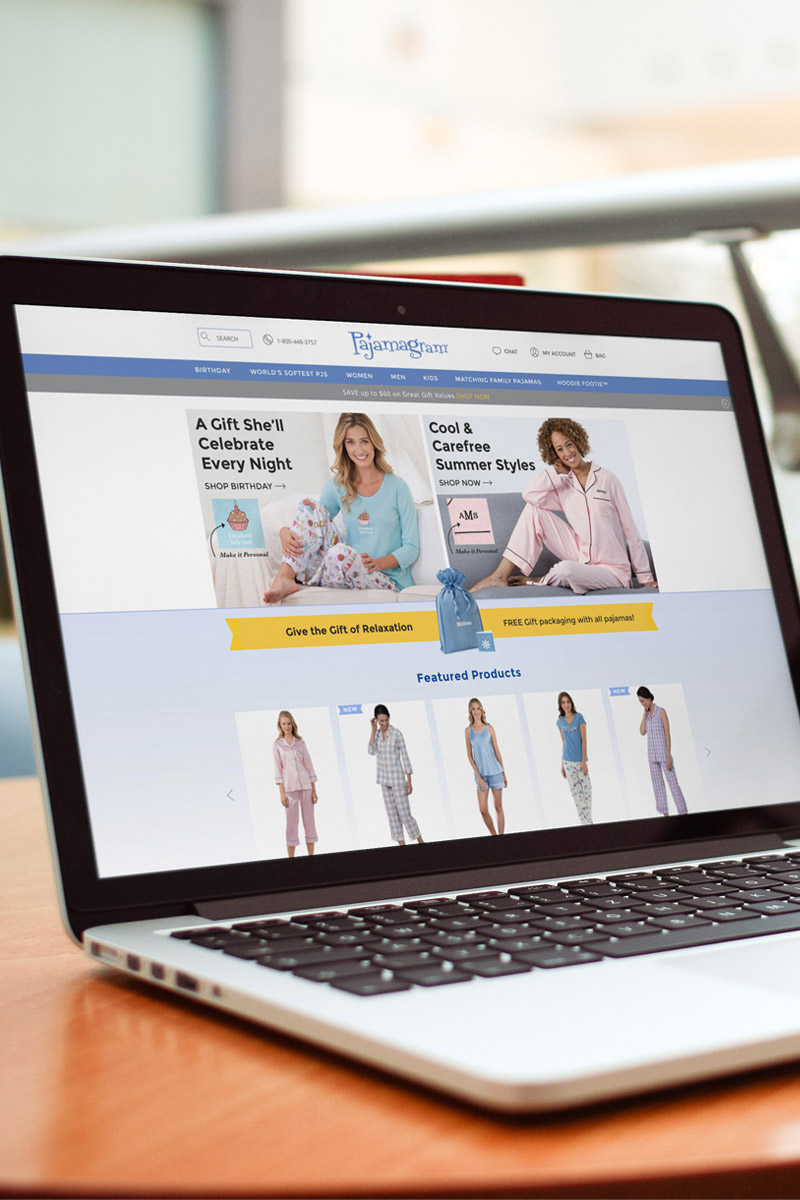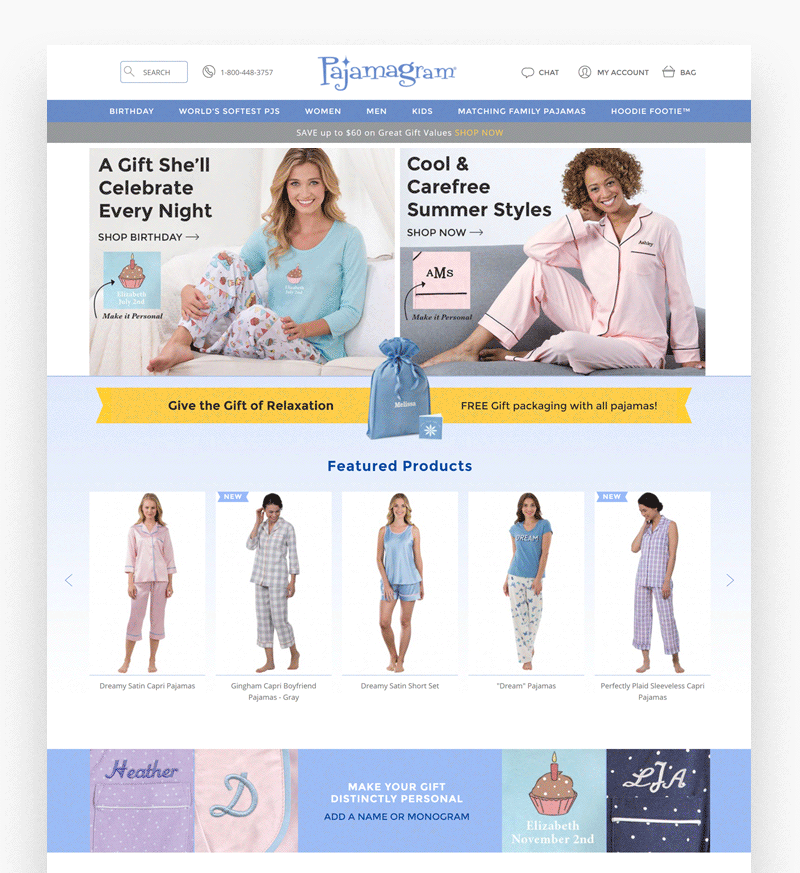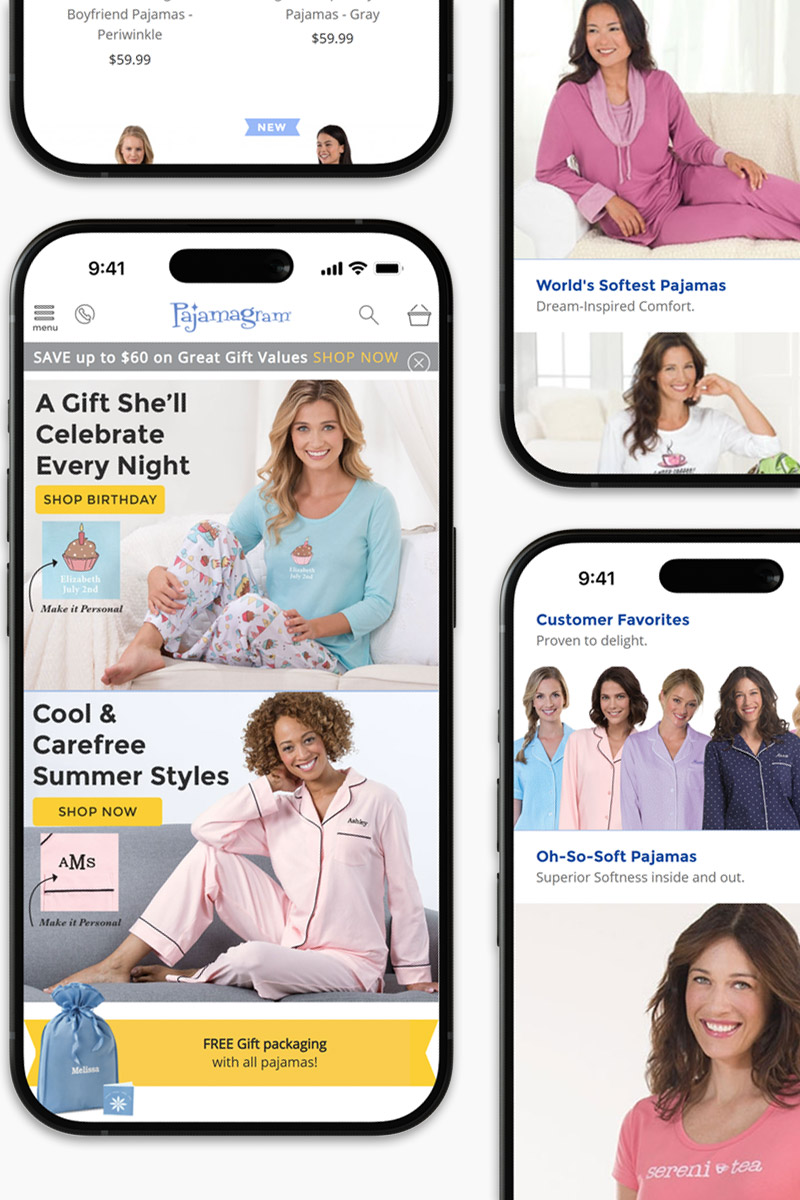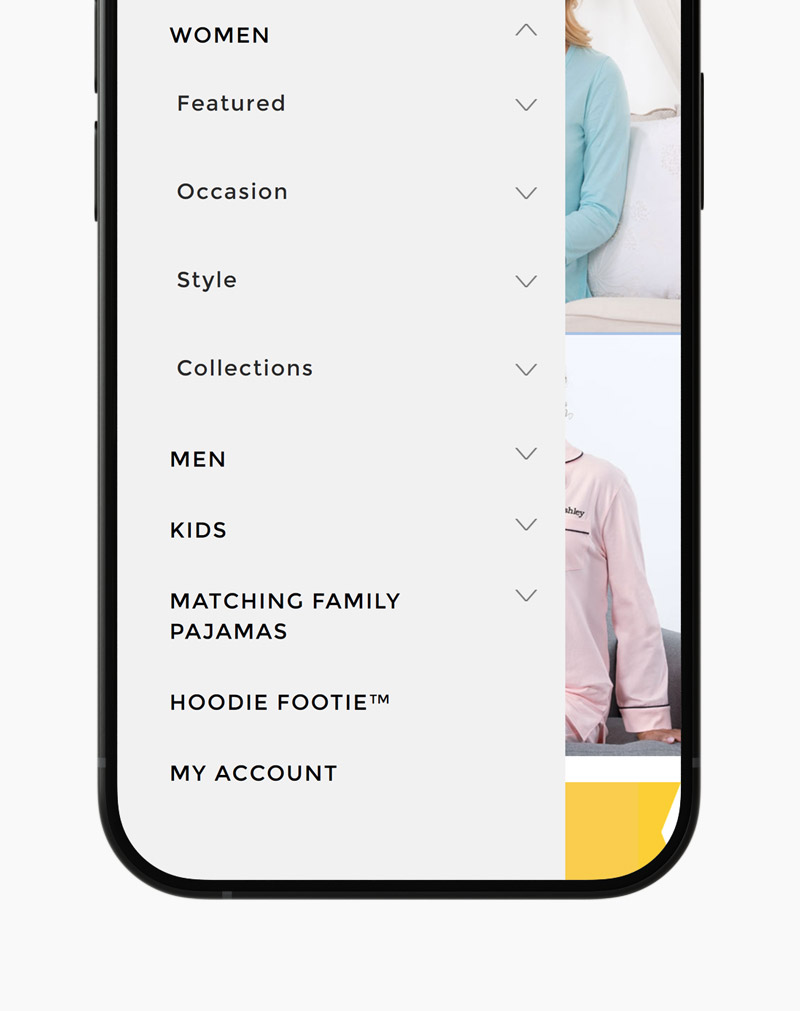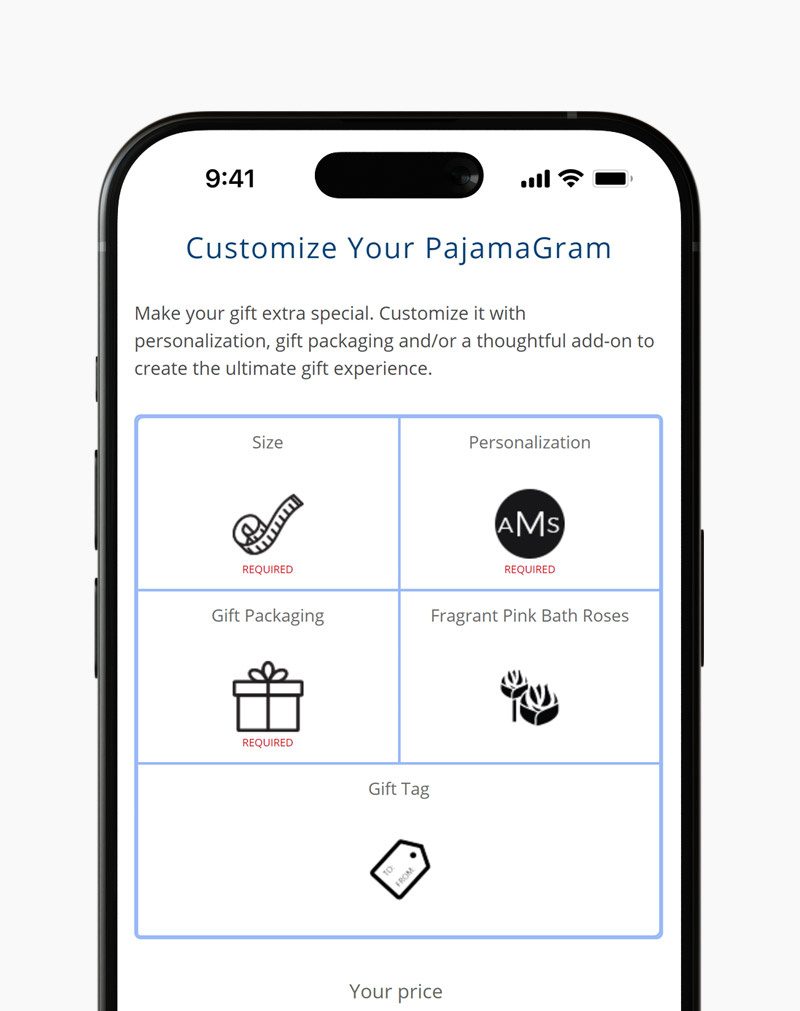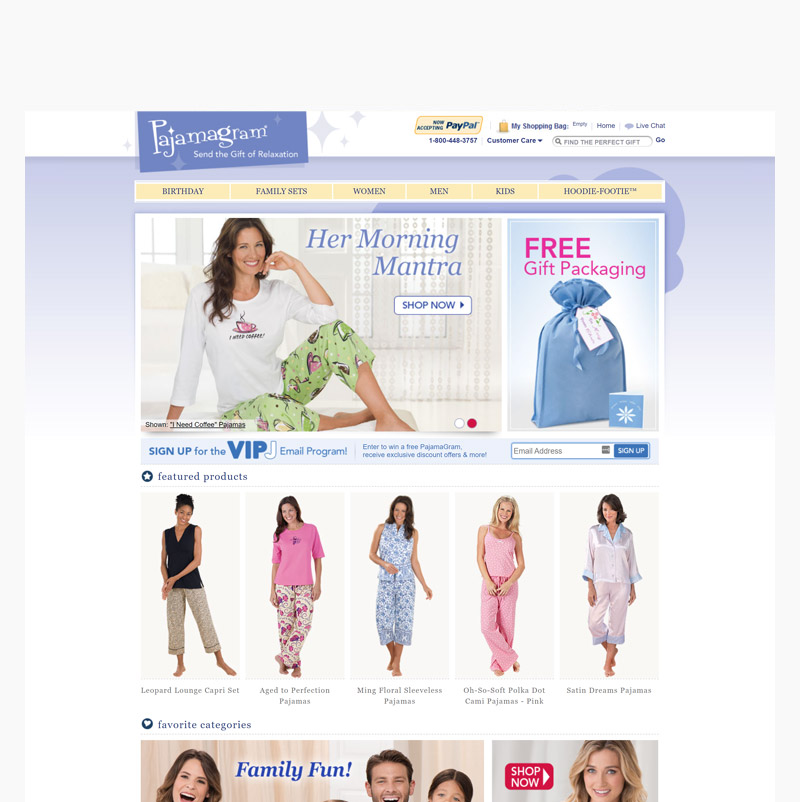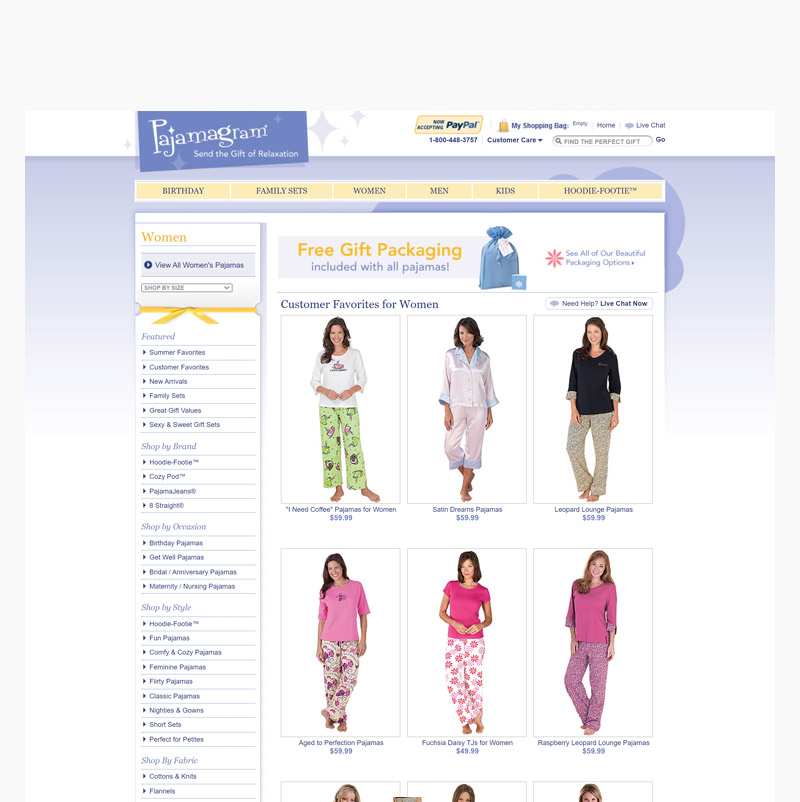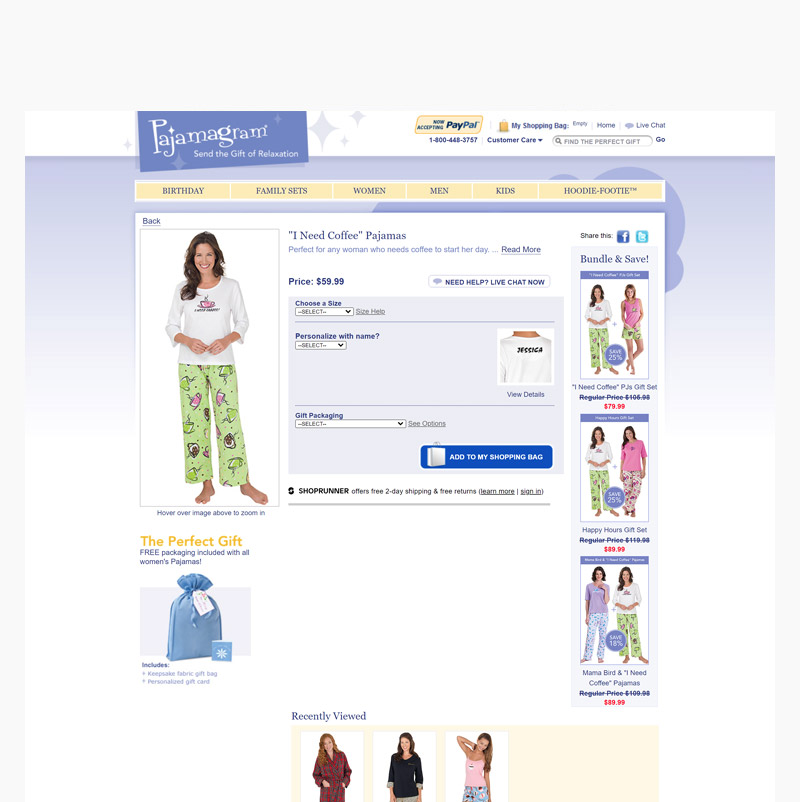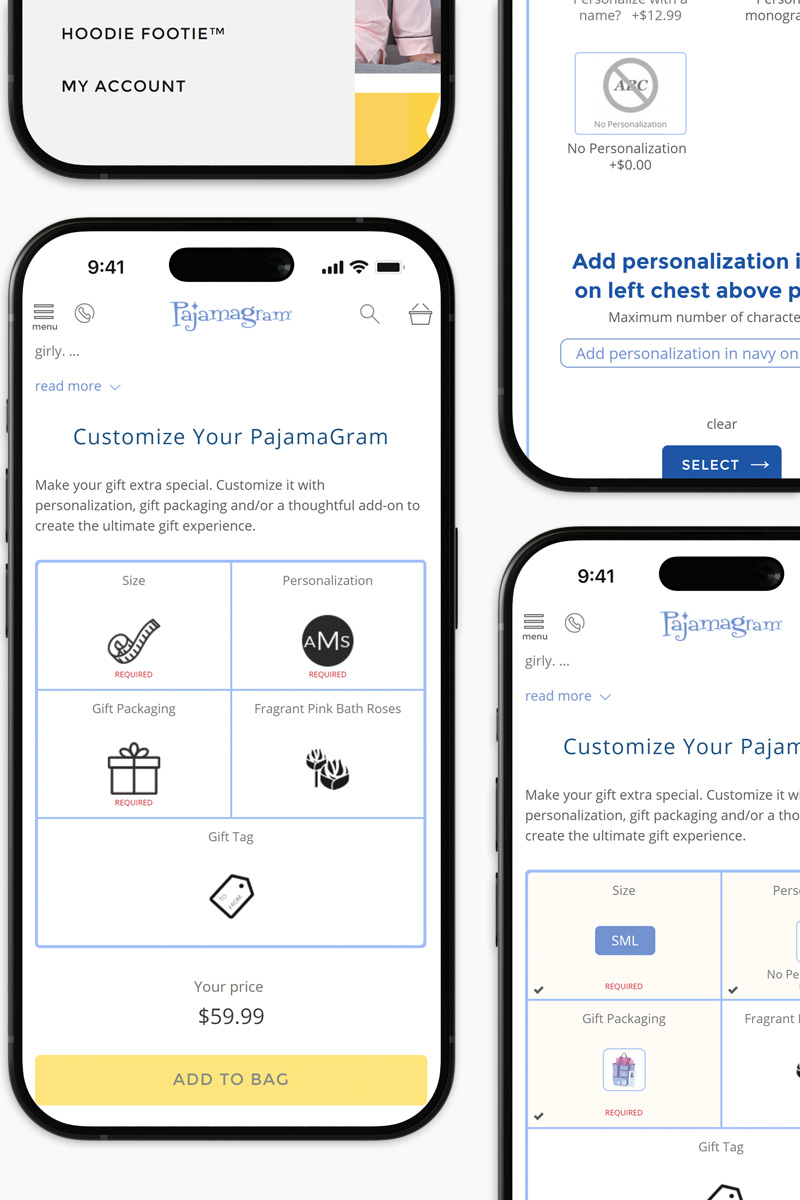Pajamagram Redesign 2017
MS Commerce Server Migration to Magento
How a Platform Migration Demonstrated the Value of Modern Systems — And Delivered a Major Boost in Conversion Rates
- Job Title
- Web Designer
- Research
- Analytics
- User journey mapping
- Competitive analysis
- Design & Production
- Low fidelity wireframes
- High fidelity mockups
- Style guides
